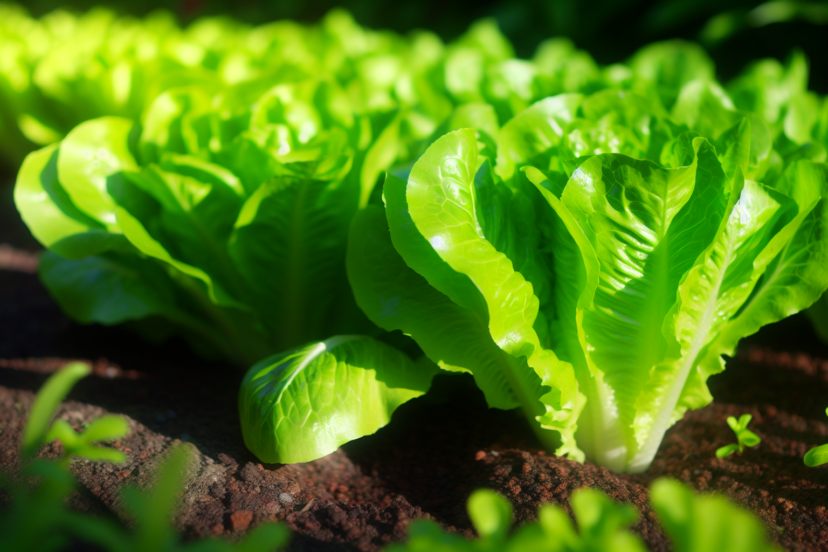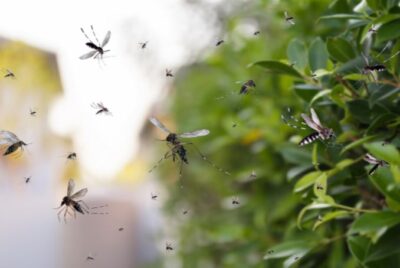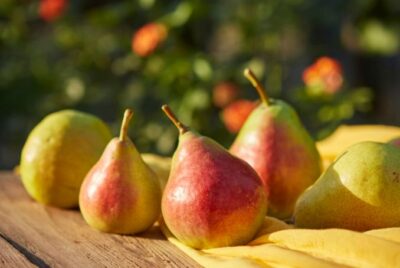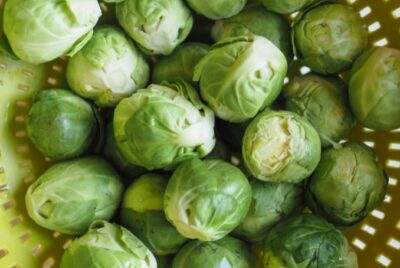Can Chickens Eat Romaine Lettuce? Exploring Risks and Rewards for Your Flock
Wondering if your chickens can enjoy the crunch of romaine lettuce? The short answer is yes, can chickens eat romaine lettuce? They certainly can, and it is safe for them. This leafy green can offer variety and essential nutrients to your flock’s diet. In this article, we’ll dive into how romaine lettuce fits into a chicken’s diet, the benefits it provides, and the important considerations to keep in mind when feeding it to your poultry.
Table of Contents
- What is Romaine Lettuce for Chickens?
- Safely Feeding Romaine Lettuce to Your Flock
- Enjoyment and Hydration: Romaine Lettuce as a Treat
- Leafy Greens Varieties: Alternatives to Romaine Lettuce
- The Risks of Overfeeding Lettuce to Chickens
- Integrating Romaine Lettuce into a Balanced Diet
- Frequently Asked Questions
- Summary
What is Romaine Lettuce for Chickens?
Yes, chickens can eat romaine lettuce. It is a safe and nutritious option for them to enjoy as part of their diet. Absolutely! But while it’s safe for your feathered friends, it shouldn’t be their primary food source. Romaine lettuce is rich in vitamins A and C, which are vital for your flock’s immune system and overall health. Moreover, it contains antioxidants that could potentially enhance their immune system and aid egg production.
However, their diet should be balanced with a mix of:
- seeds
- grains
- fruits
- vegetables
- insects
Romaine lettuce, though nutritious, is low in fat and protein, which are crucial for a balanced chicken diet. Therefore, it should be offered sparingly, best used as part of a diverse diet, and not as the only component.
The Nutritional Profile of Romaine Lettuce
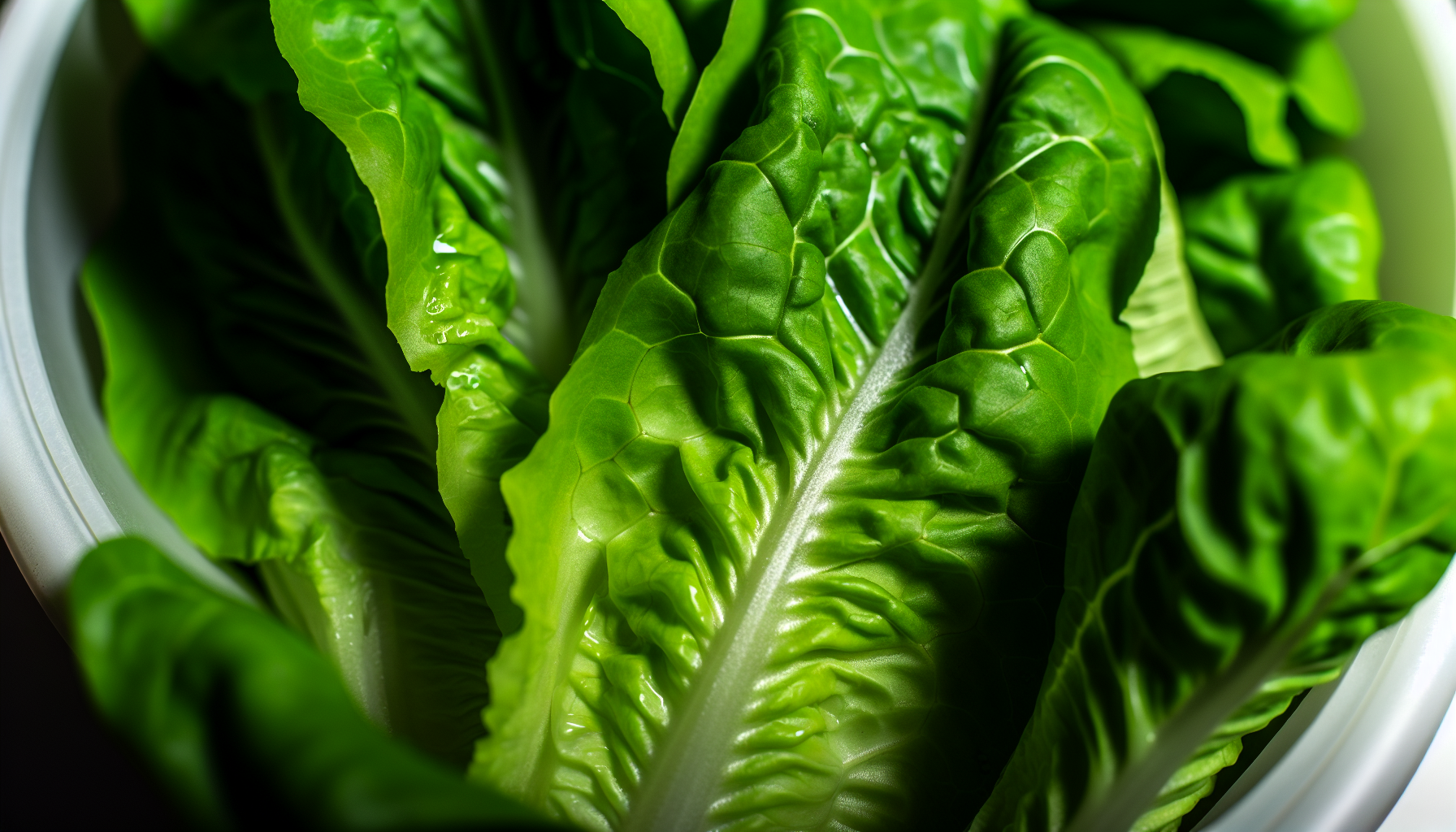
When chickens eat romaine lettuce, they’re consuming a good source of vitamins A and K. A 70-gram serving of romaine lettuce provides 194 mcg and 147 mcg of vitamins A and K, respectively. These vitamins not only support immune health but also aid in blood clotting.
Additionally, romaine lettuce provides the following benefits for chickens:
- Boosts immune system development due to its vitamin C content (around 4.12mg per 100g)
- Provides essential minerals like calcium, potassium, and magnesium, which are crucial for bone health, fluid balance, and nerve function
- Acts as a low-calorie, hydrating snack due to its high water content
These nutritional benefits make romaine lettuce a great addition to a chicken’s diet.
Comparing Romaine to Iceberg Lettuce
While chickens can eat lettuce in various forms, not all lettuce is created equal. Romaine lettuce is more nutritious than iceberg lettuce, offering greater health benefits to chickens. In fact, chickens eat bibb lettuce as well, which is another nutritious option for them.
However, it is important to note that chickens eat iceberg lettuce too, but it provides less nutritional value compared to romaine and bibb lettuce.
So, when it comes to the question, “Do chickens eat lettuce?” the answer is yes, but some types are better for them than others. Additionally, it is worth mentioning that chickens eat lettuce cooked, which can be a tasty treat for them.
Interestingly, chickens eat lettuce raw as well, making it a versatile food option for them. Chickens eat redleaf lettuce too, adding another variety to their diet. As a side note, chickens lettuce is a term used to describe the various types of lettuce that chickens can consume.
Iceberg lettuce should be limited in a chicken’s diet due to its lack of essential nutrients. It also has a high water content that could lead to diarrhea in chickens. But don’t worry, the symptoms usually subside after a few hours.
Safely Feeding Romaine Lettuce to Your Flock
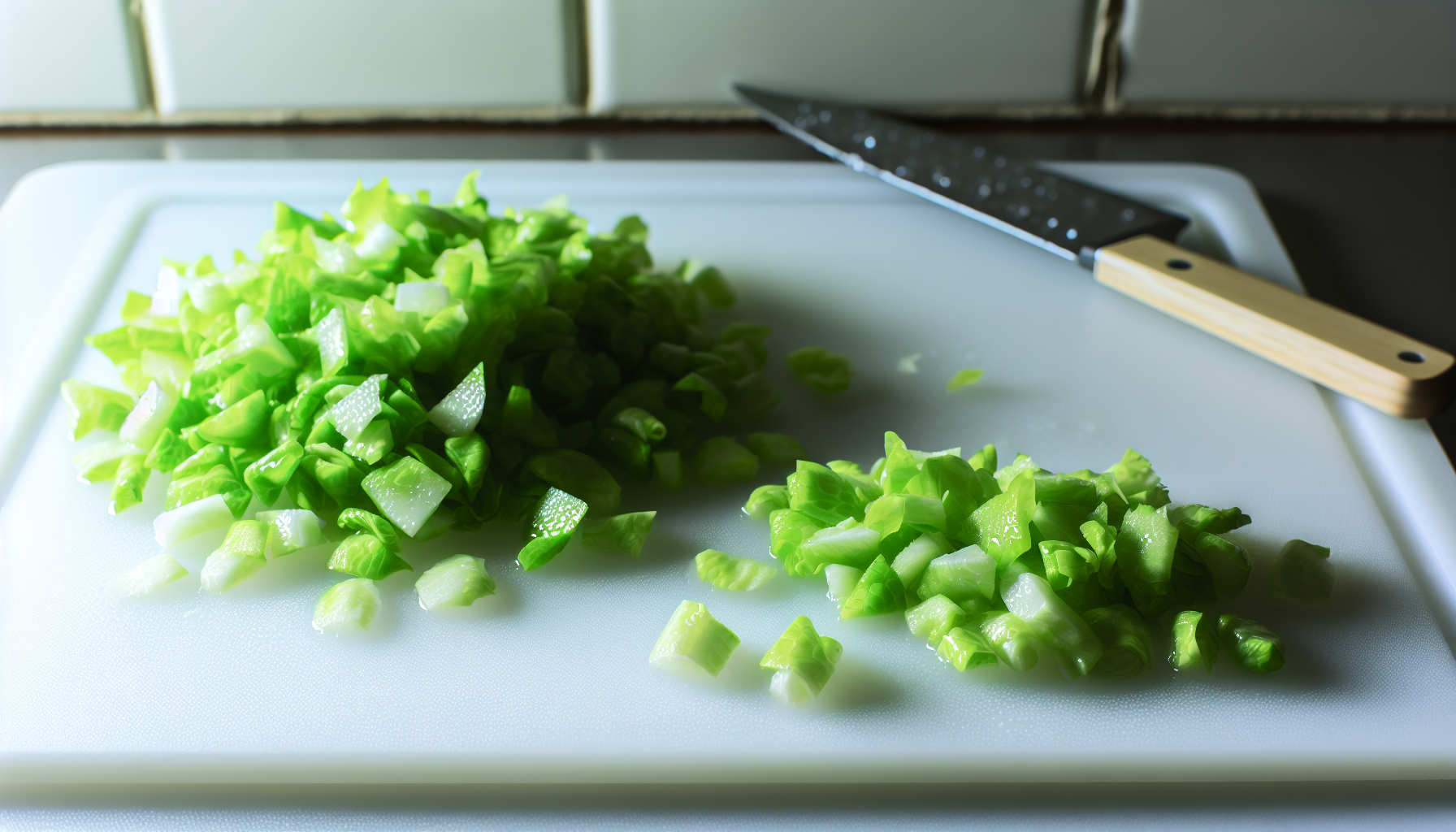
Now that we know chickens can eat romaine lettuce, the question is, how do we feed it to them? Always opt for organic romaine lettuce or darker varieties, which are healthier for chicken feeding. Ensure the lettuce is thoroughly washed to remove harmful pesticides before feeding.
It’s perfectly fine to feed your chickens romaine lettuce, whether whole, unchopped, or mixed with other foods. However, it’s better to remove tough or woody parts of the stem for easier consumption. Raw romaine lettuce retains more nutrients compared to cooked lettuce, and it can be served alone or alongside grains and other chopped vegetables.
Preparing Lettuce Prior to Feeding
Before feeding romaine lettuce to chickens, cleanliness is key to avoid any risks of insecticides, worms, or insects. It should be thoroughly rinsed to remove dirt or debris and patted dry before you feed romaine lettuce to them. Although cooked romaine lettuce is an option, it is not necessary for chickens.
Washing and chopping the romaine lettuce into small pieces before feeding it to chickens makes it easier for them to consume. For baby chicks, romaine lettuce should be cut into even smaller pieces.
How Much Lettuce Can Chickens Eat?
Portion control is key when feeding lettuce to chickens. Adult chickens can eat 2-3 cups of shredded romaine lettuce per dozen birds once or twice a week. For baby chicks, starting from the age of 3-4 weeks, a few small shredded pieces of lettuce can be given 2-3 times per week.
It’s important to maintain a nutritional balance. Romaine lettuce should not exceed 10% of a chicken’s overall diet. Despite its rich vitamin content, it’s low in protein, which is not enough to meet a chicken’s daily requirement of 17 grams for light breed hens. Therefore, feeding small quantities of romaine lettuce is important to prevent diarrhea in chickens.
Enjoyment and Hydration: Romaine Lettuce as a Treat
Beyond nutrition, romaine lettuce can be a hydrating and enjoyable treat for chickens, especially during hot weather. It contains 65.4g of water per 100g serving, making it an excellent source for maintaining hydration in chickens, particularly in warm weather.
Romaine lettuce can aid in lowering chickens’ body temperature and ward off heat stress. This makes it an ideal cooling treat during hot weather. On hot summer days, it is recommended to refrigerate or freeze a head of romaine lettuce before giving it to chickens. You can even hang it up for them to peck at for additional cooling relief.
Cooling Treat for Hot Summer Months
Given that romaine lettuce has approximately 65.4g of water per 100g serving, it offers significant hydration for chickens in the heat. On sweltering days, serving chilled or frozen romaine lettuce can help cool chickens down and provide relief from the heat.
Adding romaine lettuce to their diet encourages chickens to drink more water, which is particularly important in high temperatures. As a low-calorie food, romaine lettuce is an excellent light treat that supports healthy digestion and doesn’t lead to excessive weight gain.
Encouraging Foraging Behavior with Lettuce
Offering romaine lettuce to your chickens can stimulate their natural foraging instincts and improve their overall well-being. Providing a varied diet, which includes romaine lettuce, can help prevent boredom and promote natural foraging behaviors in animals. This can contribute to their overall health and well-being..
One effective way to encourage foraging behavior is to hang up the romaine lettuce so that chickens can easily peck at it. This keeps them active and mentally engaged, which is beneficial for their overall health and stress levels.
Leafy Greens Varieties: Alternatives to Romaine Lettuce
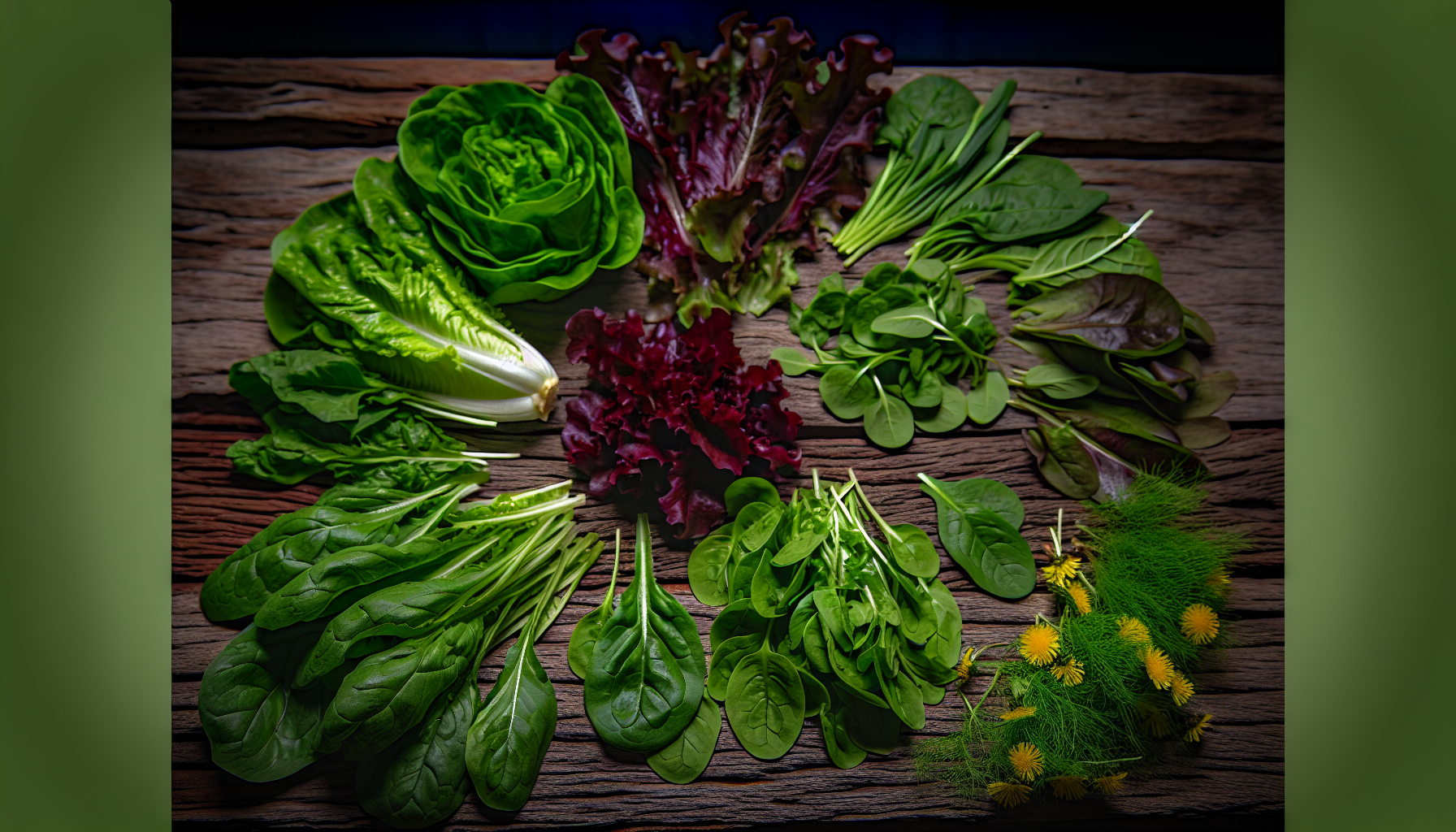
While romaine lettuce is a great addition to your chickens’ diet, they can also enjoy a variety of other leafy greens. These include:
- Red leaf lettuce
- Darker green leaf varieties
- Spinach
- Dandelion greens
All these alternatives provide essential nutrients that contribute to a balanced diet for chickens.
In addition to leafy greens, other safe vegetables for a chicken’s diet include carrots, cucumbers, pumpkins, and squash. You can also consider incorporating organic or well-washed fruits like cucumbers, raspberries, and apples into their diet.
Green Leaf and Red Leaf Lettuce
Both green leaf and red leaf lettuce are safe and nutritious options for chickens. They provide chickens with essential minerals such as:
- iron
- manganese
- potassium
- zinc
These minerals support their overall health.
Green leaf lettuce contributes to their diet with vitamins, minerals, and fiber, making it a great alternative to romaine lettuce when you want to eat lettuce raw.
Dark Leafy Greens Worth Considering
Dark leafy greens like kale and dandelion greens offer valuable nutrients and can be included in a chicken’s diet. Here are some benefits of kale for chickens:
- Rich in vitamins A, K, and C
- Provides essential minerals such as magnesium, potassium, iron, calcium, copper, and phosphorus
- Highly beneficial for egg-laying hens
Dandelion greens also offer valuable nutrients including calcium and iron, contributing to a balanced diet for chickens. Other nutritious alternatives for chickens consist of:
- Collard greens
- Swiss chard
- Mustard greens
- Turnip greens
The Risks of Overfeeding Lettuce to Chickens
While romaine lettuce and other leafy greens are generally safe for chickens, there’s a catch – overfeeding. Chickens may develop diarrhea or start losing weight when they have too much romaine lettuce. This is due to the lack of fat and protein, leading to nutritional imbalances. Therefore, to prevent digestive issues and nutritional imbalances, lettuce should not exceed 10% of a chicken’s overall diet.
Overfeeding lettuce can result in loose droppings in chickens, a direct consequence of the high water content in lettuce. Hence, it’s important to keep track of the amount of lettuce you’re feeding your chickens to avoid any health issues.
Monitoring Chicken Consumption of Lettuce
It’s important to keep an eye on your flock’s lettuce consumption to prevent over-reliance on it. Overdependence on too much lettuce can lead to deficiencies in essential nutrients if it makes up too large a portion of their diet. To maintain a balanced diet, it’s crucial to feed lettuce in moderation.
It’s also important to remove uneaten romaine lettuce from the chicken area within a few hours to prevent spoilage and pest attraction. By keeping their feeding area clean and free from uneaten food, you can help avoid attracting rodents and other pests.
Foods to Avoid Feeding Alongside Lettuce
Feeding chickens isn’t just about knowing what to feed them, it’s also about knowing what not to feed them. Certain foods should be avoided alongside lettuce. These include onions and garlic, which can cause anemia in chickens, especially when consumed in large quantities. Avocado pits and skins contain a toxin called persin, which is fatal to chickens.
Other foods to avoid include:
- Raw or green potatoes
- Peels
- Green tomatoes
- Undercooked or dried beans
- Caffeinated foods
- Chocolate
These foods contain toxins like solanine and theobromine, which can pose severe health risks to chickens. Also, salad greens drizzled with fatty dressings or topped with bacon bits can lead to health issues.
Excessive salt, foods high in sodium, and processed or very greasy foods should also be avoided as they disrupt chickens’ electrolyte balance and pose health risks, especially when fed along with lettuce.
Integrating Romaine Lettuce into a Balanced Diet
Romaine lettuce, while beneficial, should only be a portion of a chicken’s balanced diet. Chickens should be fed a diet that consists of 90% commercial feed to ensure they receive the essential nutrients they need, with the remaining 10% of their diet coming from fruits and vegetables such as romaine lettuce.
Remember, romaine lettuce, although nutritious, is low in calories and does not provide sufficient protein and fat. Hence, it’s important to balance a chicken’s diet with a blend of fruits, vegetables, and grains to meet all nutritional needs.
Essential Vitamins and Minerals for Chickens
Romaine lettuce provides essential vitamins and minerals for chickens. For instance, it provides magnesium, which is crucial for metabolic processes and enzyme function in chickens.
Plus, the calcium content in romaine lettuce is imperative for chickens, supporting better egg production and quality.
Complementing Lettuce with Other Foods
To provide a well-rounded diet for your chickens, complement romaine lettuce with other nutritious foods like:
- Carrots
- Cucumbers
- Pumpkins
- Squash
- Berries
Adding carrots, cucumbers, pumpkins, and squash to a chicken’s diet complements the nutrients found in romaine lettuce and contributes to a well-rounded nutrient intake.
Other foods like cabbage can serve both as entertainment and a source of nutritional roughage for chickens. Incorporating berries like blueberries and raspberries into the diet can provide chickens with vitamin C and antioxidants, which are beneficial when served along with romaine lettuce.
Frequently Asked Questions
What kind of lettuce is good for chickens?
Romaine lettuce is a great choice for feeding your baby chicks as it provides essential nutrients like potassium, magnesium, and Vitamin K. Avoid feeding them iceberg lettuce as it can cause diarrhea.
Why is it illegal to feed chickens kitchen scraps?
Feeding kitchen scraps to chickens is illegal because it can lead to disease transference and pose a contamination risk due to potential diseases in a domestic kitchen.
Can you give a chicken too much lettuce?
No, don’t give chickens too much iceberg lettuce as it has very little nutritional value and can cause diarrhea. Opt for more nutritious leafy greens like cabbage, kale, and collards instead.
What veggie scraps can chickens not eat?
Chickens should avoid eating foods that are poisonous to them.
Can chickens eat romaine lettuce?
Yes, chickens can eat romaine lettuce as it is a good source of essential vitamins and minerals for them. It can also be a refreshing treat, especially in hot weather.
Summary
To sum up, romaine lettuce can be a nutritious addition to your chickens’ diet, providing essential vitamins and minerals. However, it’s crucial to consider portion control, cleanliness, and the overall balance of the diet. Remember, while romaine lettuce is beneficial, it’s just one piece of the puzzle. A well-rounded diet, including a variety of leafy greens, fruits, vegetables, and grains, is key to ensuring your chickens’ health and happiness.

